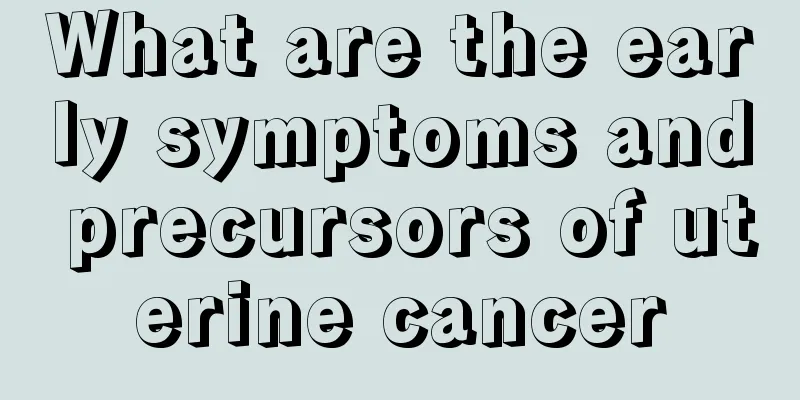An early reaction to a brain tumor?

|
There are many types of tumors, among which brain tumors are the most common. Generally, the incubation period of tumors is very long, and once an attack occurs, there is no way to reverse it. In fact, no matter whether the brain tumor is benign or malignant, the body will show some symptoms. Brain tumors are easiest to treat in the early stages, but the early symptoms of brain tumors are easily overlooked. What are the early reactions to tumors in the brain? Knowing the early symptoms of brain tumors is very helpful for the treatment of brain tumors. What are the early symptoms of brain tumors? Whether benign or malignant, they will occupy space inside the skull, compress brain cells, and increase intracranial pressure. Therefore, no matter what kind of tumor it is, it is a serious disease. If early diagnosis and early treatment can be achieved, the therapeutic effect is generally satisfactory. Chronic, progressive headache. Common early symptoms of brain tumors. In the early stages, the attacks are intermittent, with throbbing pain and distending pain, which mostly occur at night or early in the morning, and the patient often wakes up from sleep with pain. Each attack lasts for several minutes or hours. As the tumor continues to grow, the pain intensifies and gradually becomes continuous. Any activity that causes an increase in intracranial pressure will aggravate the headache symptoms. Changing body position can also affect the severity of headaches. For example, when standing, brain pressure can be relatively reduced, and the pain is relieved; when lying down, brain pressure is relatively increased, and the pain is aggravated. Severe headaches are accompanied by nausea and vomiting, and the headache is relieved in a short period of time after vomiting. Brain tumors can cause non-ophthalmological vision loss, diplopia, strabismus, visual field (range of vision) defects, or unilateral exophthalmos. Hemianopsia, one eye can see, but the other side cannot. When the tumor directly compresses the optic nerve, not only will vision suddenly deteriorate, but it may also cause blindness. Brain tumor examination 1. Skull plain film: intracranial hypertension, pineal gland calcification and displacement, abnormal calcification, bone destruction, enlarged internal auditory canal, enlarged sella turcica, etc. 2. Cerebral angiography: It is not a routine examination for brain tumors, but it can be used to determine the anatomical relationship between the tumor and important blood vessels, the blood supply to the tumor, and preoperative embolization. 3. CT examination: CT examination has high density resolution and can easily show the calcium, bone, fat and fluid contained in the intracranial tumor; CT can display the ventricles, cisterns, dura mater and skull, which is beneficial to the anatomical relationship between the tumor and its adjacent parts. CT contrast-enhanced scanning can help understand the blood supply of the tumor and the damage to the blood-cerebrospinal fluid barrier, which is beneficial for the display and characterization of the tumor. Spiral CT makes the resolution of coronal and sagittal reconstructed images the same as that of axial reconstructed images. Three-dimensional imaging, segmentation imaging and CT angiography improve the accuracy of CT diagnosis of intracranial tumors. 4. MRI: MRI has excellent soft tissue resolution. Multi-plane imaging enables more accurate lesion positioning. The vascular flow void effect and a variety of imaging methods and pulse sequence technologies promote the qualitative diagnosis of intracranial tumors. It is the gold standard for the diagnosis of intracranial tumors. However, MRI is not effective in detecting bone mass and lesions, the examination takes a long time, and emergency patients are not likely to cooperate. MRI enhanced scanning can improve the detection rate of tumors and detect lesions that are negative or easily overlooked on MRI plain scans. Magnetic resonance diffusion imaging, perfusion imaging and MRI waves are also helpful for the qualitative diagnosis of intracranial tumors. 5. Neuronuclear medicine examinations (PET and SPECT) can distinguish between benign and malignant tumors, postoperative residual tumors and scars. 6. Biopsy: Stereotactic biopsy is the standard biopsy technique for intracranial tumors. Multiple specimens should be obtained from different parts for serial biopsies to avoid diagnostic errors caused by tumor heterogeneity as much as possible. 7. Others such as lumbar puncture and cerebrospinal fluid testing. |
<<: Are there red blood streaks on the inner thighs?
>>: Tumor on the lumbar spine?
Recommend
What to do if your calf hurts
Leg pain is more common among children, which is ...
What are the common sense causes of tongue cancer
Tongue cancer is difficult to treat and is malign...
Freeze drying principle
It seems that freeze-drying is actually a technol...
Wisdom tooth growth process
Most adults will have wisdom teeth grow, but they...
Are all the vestibular bulbs granular?
The vestibule is an important part of our body. R...
Can I go online during pregnancy
Computer operation can cause many kinds of harm t...
Is it expensive for glioma patients to see a Chinese doctor?
Is it expensive for glioma patients to see a Chin...
How long can you live after lung cancer metastasizes
Patients can also control bone metastasis through...
What can I eat every day to avoid constipation?
Constipation is a problem that bothers many frien...
How to treat closed acne, simple method to get rid of closed acne
Skin is our facade, especially in this appearance...
How to relieve the pain of advanced laryngeal cancer symptoms
Laryngeal cancer causes physical and mental pain ...
How to train the lower part of the latissimus dorsi
Fitness can be said to be a popular way nowadays,...
Laser removal of port wine stains
Port-wine stains usually grow on the face. It is ...
What are the treatments for melanoma?
Malignant melanoma originates from melanocytes. M...
The truth about curing allergic rhinitis is this
Allergic rhinitis has always troubled people'...









